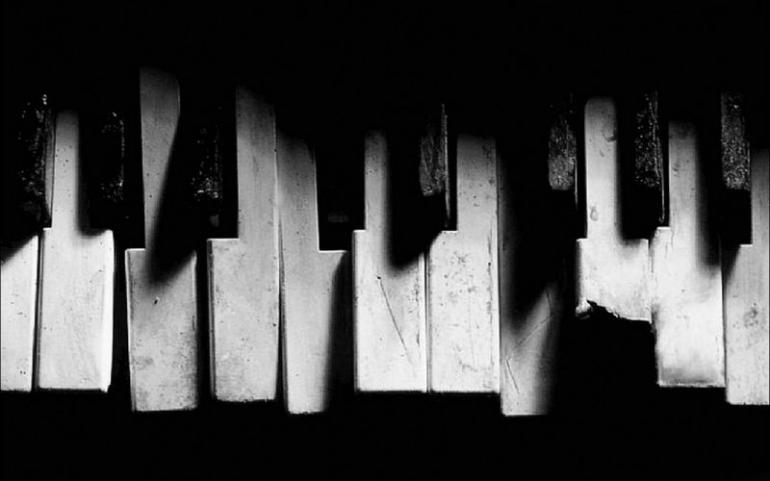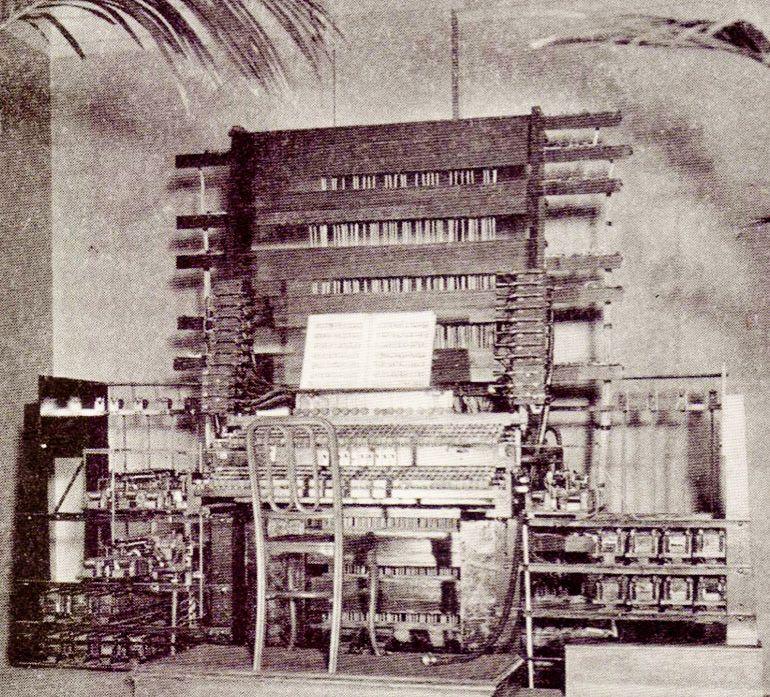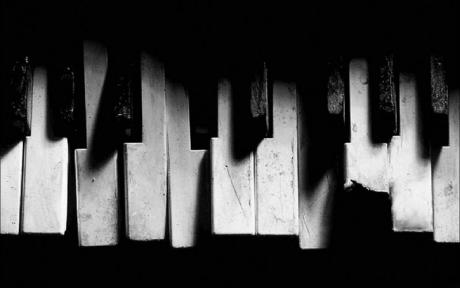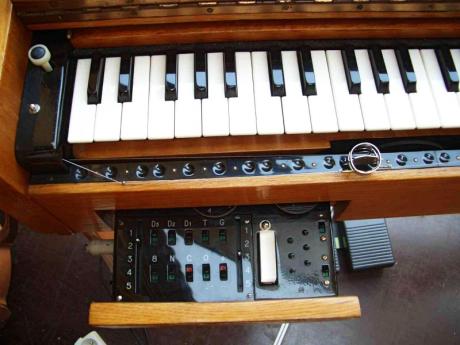Rockové klávesy - Začátky elektronických nástrojů

Early electronic instruments
Hello readers! This month I wanted to take a slight departure from the modern technical and theoretical topics we have been discussing lately to talk about early electronic instruments. Long before analog and digital synthesizers, there were quite a few interesting instruments created that used electricity to create sound.
First electronic instrument
The first electric synthesizer was invented in 1876 by Elisha Gray and was called the Musical Telegraph. The instrument was actually created by accident when Gray was working on telephone technology. The inventor actually created the first oscillator when he discovered that he could control sound from a self-vibrating electromagnetic circuit. The Musical Telegraph used steel reeds oscillated by electromagnets that was transmitted over a telephone line to transmit the sound.

Telharmonium
Another early electronic instrument was the Telharmonium patented in 1897 by Thaddeus Cahill. The Telharmonium used tonewheels to generate sound much like the Hammond organ would 35 years later. The instrument could produce any combination of notes and overtones, at any dynamic level. Over the next ten years, Cahill had three larger and more involved versions of his instrument made. The first of these instruments weighed seven tons; the last one more that two hundred and could only be transported by rail using up to thirty boxcars. By 1912 people unfortunately lost interest in the instrument and Cahill went bankrupt.
Theremin
This may be the most well known of the early instruments we will talk about in this article. In 1919 Lev Termen from Leningrad built and demonstrated his Etherophone, which was later renamed the Theremin. The instrument was played by positioning the hands around two metal antennas. One of the most interesting things about the Theremin was that it was the first musical instrument that you didn't have to touch to play. Interest in the new instrument was very high, which led to the first compositions for electronic instruments. In 1929, Joseph Schillinger composed the First Airphonic Suite for Theremin and Orchestra which featured Termen as the soloist on the new marvel instrument. The next year, Henry Cowell commissioned Theremin to create the first electronic rhythm machine, called the Rhythmicon. Cowell wrote some compositions for it, and he and Schillinger premiered it in 1932.
Ondes Martenot
In 1928, the Ondes Martenot was invented by Maurice Martenot. This interesting instrument was originally designed to reproduce the microtonal sounds found in Hindu music. The instrument made its debut in Paris and was a huge hit. Many well know composers of the day used the instrument including Boulez, Messiaen, and Varèse. Guitarist, Jonny Greenwood of Radio Head is a modern artist who uses the instrument often. Some of the most compelling uses of this instrument were by visionary composer, Olivier Messiaen. In 1937, Messiaen wrote Fête des Belles Eaux per Sestetto di Ondes Martenot. Many scholars believe this piece is the most interesting display of the full range of the mysterious instrument.

Hammond Novachord
Originally a clockmaker, Laurens Hammond established his company for the manufacture of electronic instruments in 1929. His first instrument was the Novachord, which was based on the principles of the Telharmonium mentioned above. The instrument featured 72-note polyphony using 12 oscillators, basic envelope control, and resonant low-pass filters. The instrument had 163 vacuum tubes and weighed 500 pounds. The most interesting feature of the instrument was envelope control which was lacking on all the earlier instruments in our discussion and was a very important component of the Analog synthesizers that Bob Moog invented in the early 70s.
Fráze a hudební termíny:
Oscillator: Oscilátor obecně znamená cokoliv, co je určené ke kmitání. V elektronice, a obzvláště pak v hudbě, se tím myslí přístroj, který generuje kmitavý signál, např. v podobě sinusoidy nebo obdélníkové vlny. Ten se pak používá mimo jiné při zvukové syntéze.
Tonewheels: Někdy neohrabaně překládáno jako „tónová kola“. Jedná se o rotující ozubená kolečka, která v kombinaci se snímačem vytvářejí jednotlivé složky zvuku Hammondových varhan.
Overtones: Toto slovo znamená alikvotní tóny, tedy vyšší harmonické frekvence.
Microtonal: Mikrotonální hudba je taková, která obsahuje i tóny, které se nenacházejí v chromatické stupnici. Objevují se v ní tedy i intervaly menší než půltón.
Envelope control: Možnost ovládat průběh hlasitosti generovaného tónu, tedy parametry attack (čas potřebný k dosažení max. hlasitosti po stisku klávesy), decay (odeznívání po dosažení nejvyšší hlasitosti), sustain (hlasitost, která po fázi „decay“ zůstává neměnná až do uvolnění klávesy) a release (doba odeznívání po uvolnění klávesy).
Low-pass filter: Frekvenční filtr, který potlačuje vyšší frekvence, zatímco nižší jím projdou více či méně beze změny.
Vacuum tubes: Elektronky neboli „lampy“. Když o těchto komponentech mluví Američané, nazývají je „tubes“, zatímco Britové používají výraz „valves“.





